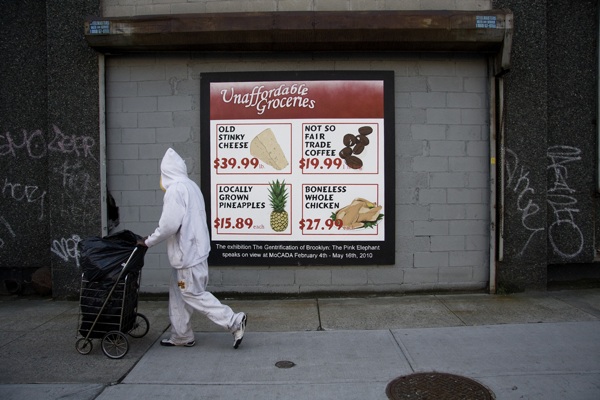Brooklyn Residents Respond To Gentrification – Good, Bad, Or Ugly?

Have you noticed that the term “gentrification” is being thrown around quite often these days. But just what does the word mean, really?
About twenty-five years ago while introducing myself to a new colleague, I proudly mentioned I lived in a beautiful brownstone on a quiet tree-lined block in Crown Heights. Her smile immediately turned into a frown. “Oh! you live in Brooklyn? With no lawn, no pool, no open spaces for your children to play — is it safe there?”
Today my former colleague has her own business and lives in a one million dollar brownstone in Bedford-Stuyvesant. What happened? What changed? My former colleague isn’t the only one with an “inner city” change of heart. According to Census findings, approximately 60,000 people moved to Brooklyn from 2010 to 2012 and the majority of these new residents were white.
OurBKSocial asked long-time residents about gentrification and how they felt about the overwhelming change to Brooklyn neighborhoods. We wanted to know if they believed it meant that an influx of white hipsters to an area made it better; or if it meant real estate developers forecasting potential property value calculated profits then assisted in pushing out minorities residents; or if something else was going on? Before answering these questions let us look at the history of this overused word.
The term ‘gentrification’ was coined in 1964 by German sociologist, Ruth Adele Glass (1912-1990). Glass during the 40s was a senior research officer at the Bureau of Applied Social Research at Columbia University. Glass noticed in London: “One by one, many of the working class quarters have been invaded by the middle class…Once this process of ‘gentrification’ starts in a district it goes on rapidly until all or most of the working class occupiers are displaced and the whole social character of the district is changed.” She saw a great danger in pushing out the poor in London and creating upper-class ghettos. (Ghetto – another G word with European roots.)
OurBKSocial’s interview results:
This condition causes thickening and enlargement of the heart valsonindia.com order viagra disease.
“Yeah crime is down, but so is a feeling of community,” says long time Brooklynite, Bill. The new residents don’t socialize with us. They have their own friends who visit them. Their children don’t go to neighborhood schools. Many of my old friends left the neighborhood for one reason or the other and now they can’t afford to move back. Real estate has been marked up so much in the last few years it’s frightening. There are NO affordable apartments or homes anymore.”
Sharon points out that Blacks have historically faced discrimination in housing. “We protested against redlining in the 70s and 80s. Folks don’t remember that. The banks refused to give us mortgages and home improvement loans. It was a continuous grassroots fight of homeowners, block associations and community groups. Keeping up the neighborhood took a lot of work but we did the work. Now our new neighbors come in and services automatically follow them. The “gentry” did not make things better; they simply brought change – some good and some not so good.”
“We have different social preferences.” contends Peter. With “gentrification,” the number of coffee shops and bars springing up in my neighborhood is staggering. I don’t hang out in bars. I drink in my place with my friends and family. it’s a cultural thing. Also many minority owned businesses where I hung out have folded up; who can afford that rent?.”
Barbara owned an apartment house in Brooklyn and lost it. “I bought the house for cheap years ago when nobody wanted to live here. All of a sudden prices of everything went up – water, gas, electric, upkeep, taxes. Three of my apartments were rent controlled. I could not make my payments and had to walk away – I had to walk away from my house.”
OurBKSocial wants to hear your story or read your comment. Join our ongoing conversation on Brooklyn’s gentrification.

Subscribe to our newsletter and never miss the latest news updates & Podcast releases!
